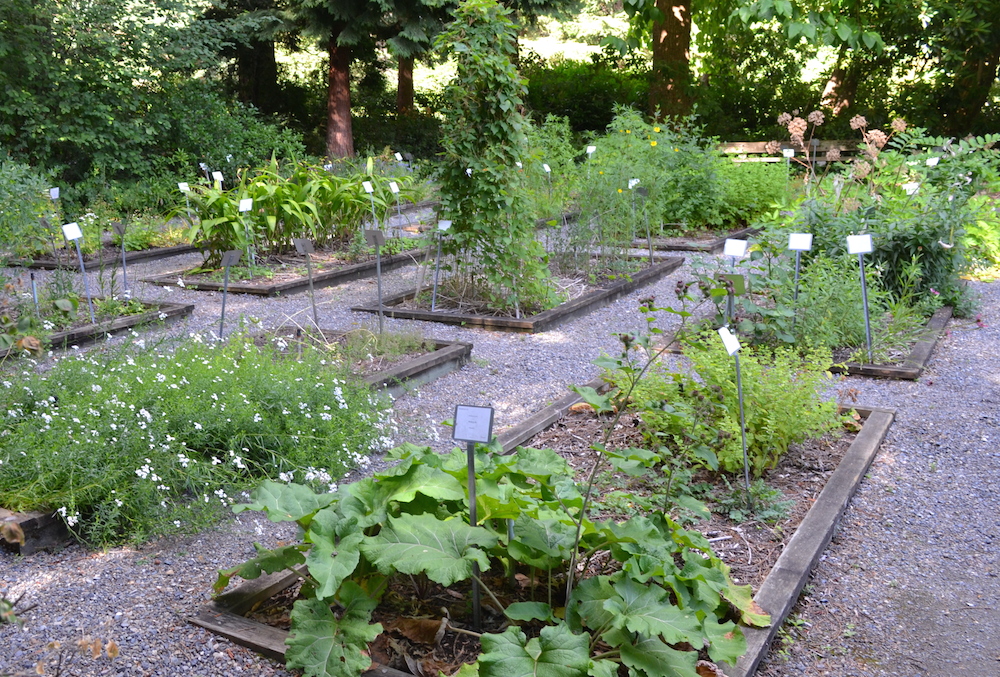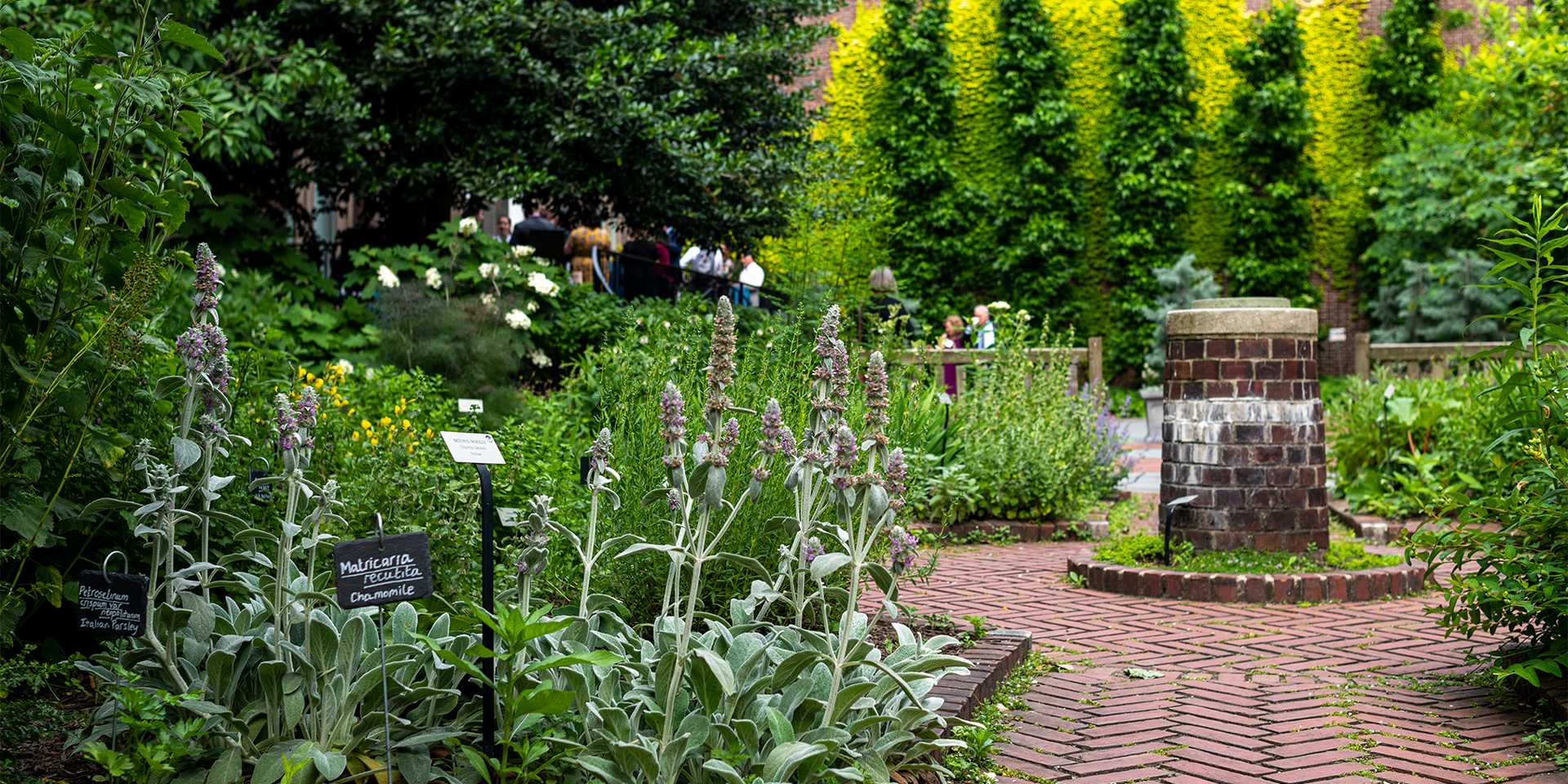Medicinal Plant Gardening:
Medicinal plant gardening: Have you ever wondered about the incredible power of plants to heal? Well, you’re in for a treat! In this article, we’re diving into the fascinating world of medicinal plant gardening.
Imagine having your very own backyard oasis filled with nature’s medicine cabinet. From aloe vera to lavender and mint, these plants not only add beauty to your garden but also have incredible healing properties.
Whether you’re interested in holistic remedies or simply want to explore the wonders of nature, medicinal plant gardening is the perfect way to bring wellness into your life. So, let’s roll up our sleeves and get ready to embark on a green journey full of knowledge, growth, and well-being!
Are you interested in cultivating your own medicinal plants? With our step-by-step guide, you can embark on a journey of healing and self-sufficiency. Learn how to select the right plants, prepare the soil, and nurture your garden for maximum potency. Whether you’re a novice or an experienced gardener, our tips and tricks will help you create a thriving oasis of herbal remedies. Embrace the power of nature and enhance your well-being through medicinal plant gardening.

Medicinal Plant Gardening: Cultivating the Healing Power of Nature
Welcome to the world of medicinal plant gardening! In this article, we will explore the art and science of growing your own medicinal plants at home. From understanding the benefits of different medicinal plants to learning practical tips for cultivating them, we have got you covered. Whether you are a seasoned gardener or just starting out, join us on this journey as we delve into the fascinating world of medicinal plant gardening.
The Benefits of Medicinal Plant Gardening
The ancient practice of herbal medicine has been used for centuries to treat various ailments and promote overall well-being. By engaging in medicinal plant gardening, you not only have access to a wide array of natural remedies but also gain numerous other benefits:
- Health and Wellness: Growing medicinal plants allows you to incorporate fresh, organic herbs into your daily life, supporting your overall health and wellness.
- Self-Sustainability: By cultivating your own medicinal plants, you become less reliant on store-bought remedies and have the satisfaction of knowing exactly where your medicine comes from.
- Environmental Stewardship: Medicinal plant gardening promotes biodiversity, reduces the need for chemical pesticides, and contributes to a healthier, more sustainable environment.
So, let’s dive into the world of medicinal plant gardening and discover how to harness the healing power of nature in your own backyard.
Choosing the Right Medicinal Plants for Your Garden
When it comes to medicinal plant gardening, selecting the right plants for your specific needs and growing conditions is crucial. Consider the following when choosing the plants for your garden:
- Climate and Location: Certain medicinal plants thrive in specific climates and grow best in certain regions. Research plants that are well-suited to your local climate to ensure optimal growth.
- Health Concerns: Identify the specific health concerns you wish to address with medicinal plants. Whether it’s digestive issues, stress, or skin problems, there are plants with properties that can assist.
- Growing Conditions: Assess the conditions of your garden, such as sunlight, soil type, and drainage. Match the requirements of your chosen plants to your garden’s conditions for best results.
By taking these factors into consideration, you can create a garden that caters to your unique needs, enabling you to reap the maximum benefits of medicinal plant gardening.
Getting Started: Preparing Your Garden
Now that you have chosen the medicinal plants to grow, it’s time to prepare your garden for their arrival. Follow these steps to create an optimal environment for your plants:
- Clear the Ground: Remove any weeds or debris from the garden bed to ensure a clean and healthy growing space.
- Soil Preparation: Amend the soil with organic matter such as compost or well-rotted manure to improve its structure, fertility, and drainage.
- Plant Spacing: Plan the layout of your garden beds, making sure to leave enough space between plants for proper air circulation and growth.
By providing your medicinal plants with a well-prepared garden, you set the stage for them to thrive and flourish, supporting their natural healing properties.
Caring for Your Medicinal Plants: Tips and Techniques
Successful gardening requires proper care and attention. Here are some essential tips and techniques to help your medicinal plants reach their full potential:
- Watering: Be mindful of the water needs of different plants and adjust your watering schedule accordingly. Overwatering can lead to root rot, while underwatering can cause wilting.
- Pruning: Prune your plants regularly to promote bushier growth and prevent overcrowding. Remove dead or diseased parts to maintain plant health.
- Fertilizing: Use organic fertilizers to provide essential nutrients to your plants. Follow specific instructions for each plant, as their nutritional requirements may vary.
These techniques will help you create an environment that supports the optimal growth and vitality of your medicinal plants, allowing you to fully harness their medicinal properties.
Exploring Medicinal Plant Categories
Medicinal plants can be grouped into different categories based on their healing properties. Let’s explore some of the popular categories and a few plant examples from each:
1. Digestive Health
Plants in this category support digestive health and promote proper digestion. Some notable examples include:
- Peppermint (Mentha piperita)
- Ginger (Zingiber officinale)
- Chamomile (Matricaria chamomilla)
These plants can relieve digestive discomfort, aid in digestion, and soothe digestive issues such as bloating and indigestion.
2. Stress and Anxiety Relief
Plants in this category help to reduce stress, anxiety, and promote calmness. A few of these plants include:
- Lavender (Lavandula angustifolia)
- Valerian (Valeriana officinalis)
- Lemon Balm (Melissa officinalis)
These plants have soothing properties that can help to relax the mind, ease tension, and promote restful sleep.
3. Skin Care
Plants in this category offer various benefits for skin health, such as moisturizing, soothing, and rejuvenating the skin. Some examples include:
- Aloe Vera (Aloe barbadensis)
- Calendula (Calendula officinalis)
- Chamomile (Chamomilla recutita)
These plants can be used in skincare products or as natural remedies for common skin conditions such as inflammation, dryness, and irritation.
Harvesting and Using Medicinal Plants
Once your medicinal plants have reached maturity, it’s time to harvest and utilize their healing properties. Here are some guidelines for harvesting and using your homegrown medicinal plants:
1. Harvesting:
Harvest medicinal plants when their active constituents are at their peak. The timing and method of harvesting can vary depending on the plant and the part you intend to use (leaves, flowers, roots, etc.). Follow specific guidelines for each plant to ensure maximum potency.
2. Drying:
Drying medicinal plants properly is vital for preserving their potency and extending their shelf life. Air drying or using a dehydrator are common methods. Once dry, store them in airtight containers away from light and moisture.
3. Utilization:
There are various ways to utilize your homegrown medicinal plants:
- Infusions: Make herbal teas or infusions by steeping the plant parts in hot water. This is a simple and effective way to extract beneficial compounds.
- Tinctures: Create alcohol-based extracts known as tinctures. They have a longer shelf life and concentrated potency compared to teas.
- Salves and Balms: Transform dried plant materials into ointments, salves, or balms for topical application.
Explore different methods to find the one that suits your needs and preferences.
The Future of Medicinal Plant Gardening
Medicinal plant gardening is not only a way to reconnect with nature and promote self-sustainability but also aligns with the growing interest in natural and holistic approaches to healthcare. As more people recognize the value of medicinal plants, gardening with the intent to cultivate these valuable resources will likely continue to gain popularity.
By cultivating your own medicinal plants, you become part of a movement that values the healing power of nature and embraces the wisdom of traditional herbal medicine. So, what are you waiting for? Start your own medicinal plant garden today and embark on a journey of self-discovery, healing, and connection with the natural world.
Key Takeaways: Medicinal Plant Gardening
- Medicinal plant gardening allows you to grow your own beneficial herbs.
- It’s important to research and choose the right plants that have medicinal properties.
- Ensure proper soil preparation and sunlight exposure for optimal plant growth.
- Regularly maintain and care for your plants by watering and providing necessary nutrients.
- Harvest medicinal plants at the right time and follow proper storage and usage guidelines.
Frequently Asked Questions
Welcome to our frequently asked questions about medicinal plant gardening! Whether you’re a beginner or an experienced gardener, we hope to provide helpful information and tips for your gardening journey.
1. How do I choose the right medicinal plants for my garden?
Choosing the right medicinal plants for your garden can be an exciting process. Start by considering your gardening zone and the specific growing conditions you can provide. Some plants thrive in full sun, while others prefer shade. Research the plants’ requirements and select those that align with your gardening space. It’s also essential to evaluate your needs and preferences. Do you want to grow plants for respiratory health, stress relief, or skincare? Identifying your goals will help narrow down your plant choices.
Additionally, consider the space available in your garden. Determine whether you have enough room to grow plants that spread or require vertical support, like climbing vines. Lastly, familiarize yourself with the plants’ growth habits, including their height, spread, and potential invasiveness in your region. This will help you plan and allocate space accordingly.
2. Can I grow medicinal plants indoors?
Absolutely! Growing medicinal plants indoors is a fantastic option, especially if you have limited outdoor space or live in an area with harsh weather conditions. To successfully grow plants indoors, ensure they receive an adequate amount of sunlight. Choose a location near a south-facing window or invest in a grow light to provide sufficient light for the plants. You’ll also need to consider temperature and humidity levels. Most medicinal plants prefer temperatures between 60-75°F (15-24°C) and moderate humidity.
When cultivating medicinal plants indoors, it’s crucial to provide appropriate containers and soil. Select pots with drainage holes and use well-draining potting soil to prevent waterlogging. Keep in mind that indoor plants might require more attention to avoid pest problems and ensure proper air circulation. Regularly check soil moisture levels and adjust watering accordingly. With the right care, you can successfully grow a variety of medicinal plants in the comfort of your own home.
3. How often should I water my medicinal plants?
The watering needs of medicinal plants can vary depending on the species and growing conditions, making it important to understand the individual requirements. As a general rule, it’s better to slightly underwater medicinal plants than to overwater them, as excess moisture can lead to root rot. Before watering, check the soil moisture by inserting your finger into the soil up to your knuckle. If it feels dry at that depth, it’s time to water.
However, keep in mind that different plants have different preferences. Some medicinal plants, like lavender and rosemary, prefer drier conditions and well-drained soil, while others, like marshmallow and comfrey, thrive in consistently moist soil. Therefore, it’s crucial to research the specific water needs of each plant in your garden and adjust your watering routine accordingly. By understanding the unique requirements of your medicinal plants, you can help them grow and thrive.
4. Are there any special considerations for organic cultivation of medicinal plants?
Organic cultivation is a wonderful way to grow medicinal plants while minimizing the use of synthetic chemicals. When it comes to organic gardening, soil quality is essential. Prioritize improving and maintaining the health of your soil through techniques such as composting, crop rotation, and using organic fertilizers. This will ensure that your plants receive the necessary nutrition and are less susceptible to pests and diseases.
In organic cultivation, it’s important to avoid the use of synthetic pesticides and herbicides. Instead, focus on prevention and natural pest control methods. This includes practices such as encouraging beneficial insects, handpicking pests, and using organic pest deterrents like neem oil or insecticidal soap. Regularly check your plants for signs of pest or disease damage and take appropriate action to protect their health.
5. How can I harvest and store medicinal plants for later use?
Harvesting and storing medicinal plants properly ensures that you can enjoy their benefits long after the growing season ends. As a general guideline, harvest medicinal plants in the morning when the essential oils are at their peak. Use clean, sharp pruners or scissors to minimize any damage to the plants. Only harvest the parts you intend to use, whether it’s the leaves, flowers, or roots.
After harvesting, gently wash the plant parts if necessary and allow them to air dry completely in a well-ventilated area away from direct sunlight. Once dry, store the plant material in airtight containers, away from heat and light. Label each container with the plant’s name and the date of harvest to keep track of freshness. It’s also beneficial to store dried herbs in a cool, dark, and dry place to maintain their potency and shelf life. Regularly inspect stored herbs for any signs of moisture or mold and discard any that show spoilage.

These Medicinal Herbs And Plants Anyone Can Grow Are AMAZING!!
Summary
Growing your own medicinal plants in a garden can be both fun and beneficial. Not only do these plants provide beautiful foliage, but they also have healing properties that can be used to treat various ailments. By creating a medicinal plant garden, you can have easy access to natural remedies right in your backyard.
Not only is gardening a great hobby, but it also allows you to learn about different plant species and their healing properties. By tending to your medicinal plants, you can enjoy the soothing scents and vibrant colors they bring to your garden. Plus, you’ll have the satisfaction of knowing that you’re growing your own natural medicine. So, why not give it a try and start a medicinal plant garden today?
